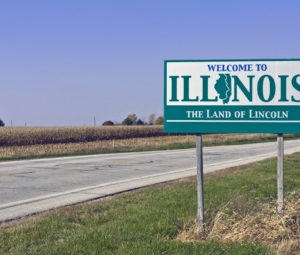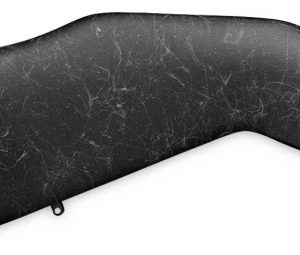Indiana Scientist Releases Gun and Lead Report
Shooting increases lead exposure.

Gabriel Filippelli, a scientist at Indiana University-Purdue University Indianapolis, has released a study examining the risks of lead exposure from shooting at shooting ranges.
Filippelli is a professor in the earth sciences department and director of the Center for Urban Health. He studies chemicals in the environment and has examined the links between lead distribution and children’s blood lead levels in urban areas.
According to the report, Filippelli found that firing a gun at a shooting range releases a high level of lead-filled dust that coats the shooter. It doesn’t matter whether the range is indoor or outdoor. This dust can enter the shooter’s bloodstream, potentially resulting in elevated lead exposure. Or, a shooter who has young children can bring this dust home on his or her skin or clothes, exposing the children to the lead.
Lead builds up in the body through exposure. Lead levels can increase over months or years of exposure. Children younger than 6 years are especially vulnerable to lead poisoning, which can affect mental and physical development. High levels of lead exposure can lead to poor judgment as well as problems with impulse control.
Filippelli said that the purpose of the paper was not to discourage gun use but to encourage safer practices while shooting. The study appeared online in April in “Environmental Health.”
“This is not an anti-gun paper,” Filippelli said. “It’s a pro lead-protection paper.”
In the paper, Filippelli says that there are an estimated 16,000 to 18,000 firing ranges in the United States. He reviewed 36 previously published articles that looked at the blood levels of people who visited both indoor and outdoor shooting ranges. Nearly all the blood lead levels the researchers studied exceeded the 5 micrograms of lead per deciliter recommended as safe levels by the Centers for Disease Control and Prevention.
Indoor firing ranges are required to have ventilation and filtration systems, but the paper concludes that even with these protections in place the lead exposure is too high. Bullets contribute to lead exposure but are not the primary culprits. The biggest problem is the primer that sits behind the bullets. The primer catches on fire and helps push the bullets out of the gun. Primer is about 40% lead. It’s this coating that covers the shooter in lead dust in a cloud from the end of the barrel.
If the gun is a rifle, which combusts near the shooter’s face, the person is coated with the fine particles, Filippelli said. Arm-length pistols spray dust a little further away, so presumably would expose a person to less dust, but no one has studied that, Filippelli said.
One way to lower exposure would be to find a lead-free alternative for primer and bullets, but so far no one has found a satisfactory replacement, he said. The paper describes shooting at ranges as an occupational necessity for security personnel, police officers, members of the military. It also says that as shooting at ranges increases in popularity among recreational shooters who are not security personnel, police officers or members of the military, their risk increases because they don’t get the same health protections as people who have to shoot for their jobs.
The paper’s recommendations to decrease lead exposure
Here are steps you can take to decrease your lead exposure when you’re at a shooting range:
- Wear a mask
- Change your clothing after shooting
- Wash your hands and shower after visiting a range
- Never eat or smoke at a firing range
The paper also recommends that firing ranges improve their ventilation systems in indoor ranges, improve air flow in outdoor ranges, and use lead-free primers and lead-free bullets. Ranges should also, in general, do a better job of educating shooters about the dangers of lead exposure. How concerned are you about lead exposure from shooting? Would you be willing to follow these precautions and wear a mask and change your clothes and shower following shooting?













